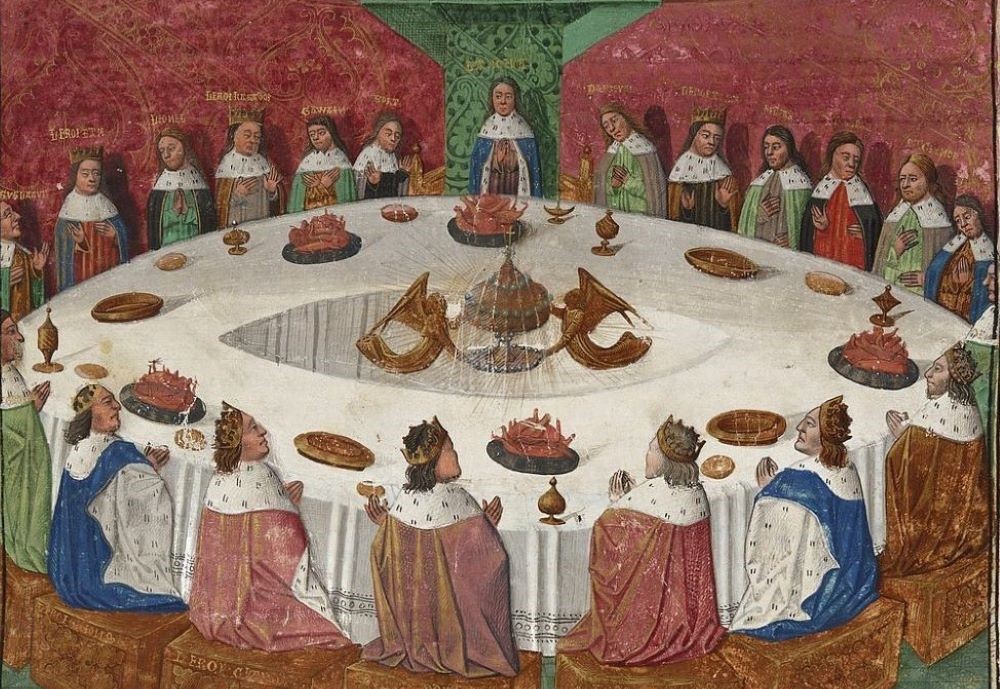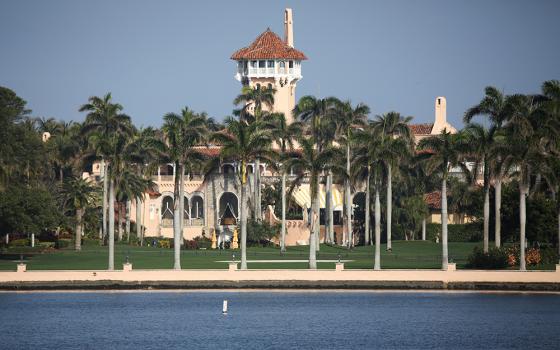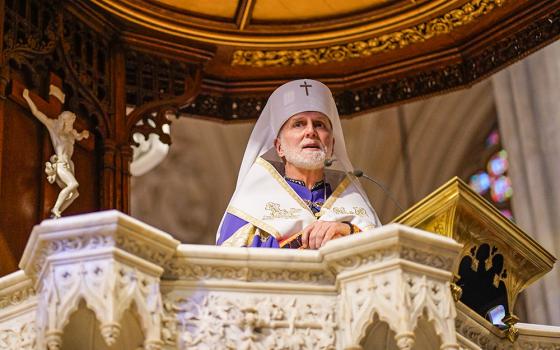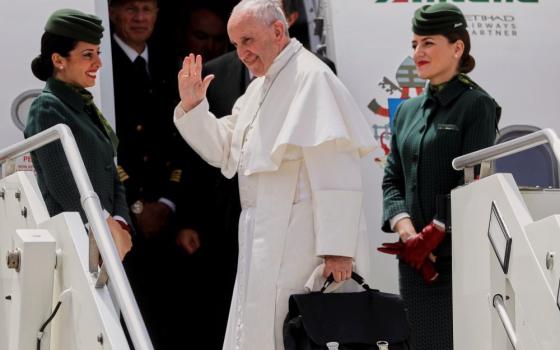
King Arthur's knights, gathered at the Round Table to celebrate Pentecost, see a vision of the Holy Grail in this 15th-century manuscript illumination by Evrard d'Espinques. (Wikimedia Commons/Public domain/Evrard d'Espinques)
I am told my antique claw-foot round oak table is out of style. Oak furniture, according to the chrome and glass people, is passe. Yet my circular table, 60 inches in diameter, still maintains a sacred position in my home.
This quartersawn oak table has facilitated innumerable interchanges. To this day, people sitting at the table have equal access to each other's conversations and, of course, the meals served there. There is no designated privileged position at my round table. Never has been. All gathered are equals. A lot of soul seeing happens in my dining room at this table!
Participants from around the world now gathered in Vatican City for the 2024 assembly of the synod on synod are seated at round tables, as they were for their first session last year. No enthroned pope, no cardinals or bishops sitting in privileged positions. The pre-Vatican II diagram of the church as a triangle with the pope on the top point and laypeople at its base had been jettisoned in favor of a church imaged by people seated at round tables.
It's nice to know that the church has begun to imagine its sacred identity as a circle. But I'm no stranger to this reality. The many and varied interactions around my round oak table have been profoundly revelatory; so, too, have other round tables I have encountered throughout my life via literary sagas, historical events and contemporary programs.
As part of my long-ago education at Chicago's Brother Rice High School, I was assigned to follow the classical curriculum. It was in this context that I first met King Arthur and the knights of the round table. Oh yes, we read excerpts from Thomas Malory's Le Morte d’Arthur and Alfred Lord Tennyson's Idylls of the King. I was captivated by the idea of a king opting to sit at a round table with his knights as equals. My imagination loomed large with pictures of this king and his knights so marvelously captured in prose and verse. Even though all was not perfect in Camelot, I still wanted a seat there! Ah, for the days and daze of a classical education. O tempora, o mores! ("Oh, the times! Oh, the customs!")
Fast forward nearly 1,000 years since the Arthurian legends became a coin of the Catholic realm, and I find myself remembering Camelot; this time not King Arthur's kingdom, but the presidency of John F. Kennedy. He and Jackie foreswore as often as possible the traditional head table looking down on elongated banquet tables at their famed White House dinners. They opted for round tables as the New Frontier unfolded. Jack and Jackie, like King Arthur, knew round tables facilitated significant conversation, and wanted this to be an essential part of their all too brief time in the White House. King Arthur's imaginary Camelot reincarnated in historical reality!
Advertisement
There are yet other groups that today recognize the sacred energy of equality round tables engender. The World Café, for example, describes itself as, "A Community Table big enough to serve an international community of active, curious learners who use the power of meaningful conversation for creating positive change in the world."
Although the legends of King Arthur and the round table were as real to me as the historic Kennedy state dinners, the most significant confirmation of round table sacrality struck me repeatedly during my teaching career at the Institute of Pastoral Studies, Loyola University Chicago. Classrooms with round tables were rare, but I always arranged the student desks in a circle and sat in one of them. The shape of the circle, a makeshift substitution for the lack of round tables, served the purpose of saying to the graduate students — and myself — that we are all here to learn from each other. Everyone's experience is a valued part of the curriculum along with the content of the syllabus. (Nowadays classrooms with round tables have become much more available, thankfully.)
And so I find myself musing about diverse ways to incarnate the sacred wisdom exchanges that round tables represent in this hierarchical organization we know as Catholicism.
How about round altars in our churches? I've never been in a church with a round altar, but perhaps some exist. The presider, whether priest, bishop or pope, could then be symbolically reminded that he is one among many who celebrate the Eucharist, and the people at the liturgy could be reminded that they themselves are a constitutive part of the sacred rite of Eucharist.
Will this synod ultimately succeed in reconfiguring the reality of Catholicism from a hierarchical triangle into a sacred circle so well symbolized by people seated at round tables? Time will tell. But one thing I do know is that synodality has been a frequent guest in my home. The Divine Presence has been, and no doubt will continue to be, made manifest at my antique round oak table when family and friends gather for worthwhile conversations and eucharistic meals.







